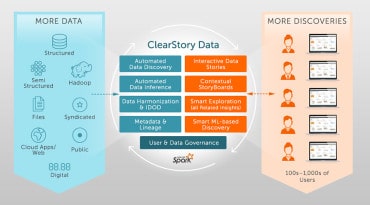
Health systems desperately need analytics that can help them provide affordable and quality care to patients in real-time. What is unsaid is that analytics, in and of itself, is not the answer as RTInsights contributor Imran Qureshi explains.
Retail, finance and many other industries have been disrupted by decision support platforms built on top of analytics capabilities. The ways in which these industries sell services and products, monitor consumer activity and sentiment, and market to groups of populations has forever been changed by their ability to analyze and target consumers with personalized engagement. Healthcare, however, has yet to experience this burgeoning business modus operandi—an odd development given that it is most in need of this sort of revolutionary change.
The healthcare industry today is faced with a magnitude of competing priorities at a time when resources are badly limited and demand for clinical outcome improvements has never been greater. In fact, right now, health systems are bleeding revenue due to their transition to ICD-10 code sets, their rocky implementation of electronic health record (EHR) systems and the industry’s movement from fee-for-service (FFS) structures to new value-based care delivery and reimbursement models. Health systems desperately need analytics that can help them provide affordable and quality care to patients in real-time. What is unsaid is that analytics, in and of itself, is not the answer.
In fact, analytics can actually slow down care delivery when not coupled with technologies that interpret and deliver the data as true clinical workflows. Without these special languages that convert data to meaningful next steps for care coordinators and clinicians, collaboration with data scientists is required to make sense of everything, making the process slow and expensive. When health systems focus on analytics alone as the answer to their population health management strategies, they lose.
What they need is analytics systems that support real-time workflows that are delivered in ways that are easily consumable. Only then will the analytics actually affect care delivery and outcomes, giving clinicians information they can use and respond to at the point-of-care for quick and effective decision making that will truly impact a population’s health.
Establishing Real-Time Workflows
So, how exactly does a health system evolve beyond analytics to real-time workflows? The first step is to recognize that EHRs are not designed to perform real-time analytics functions or create point-of-care workflows. Single-vendor strategies have long inhibited industry progress, pushing the health system c-suite into believing that Big Data vendors and EHR companies can be everything to everyone.
While some people predict that future editions of the Certified EHR Technology criteria will include greater emphasis on analytics capabilities to ensure that health systems can better manage population health activities via their EHR system, this is unrealistic. So far, EHRs have proven that they are good at one thing: collecting data—and only within the four walls of the health system. EHRs were not designed to operate outside of these brick-and-mortar institutions, let alone collect and analyze data or ultimately serve as an organization’s population health management backbone.
Even if EHR vendors do integrate analytics into their systems, the capabilities will be rudimentary. They will lack the necessary capabilities to support clinicians at the point-of-care and will lack the sophistication to guide hospitals’ population health strategies. And, even if basic functionality is incorporated into EHRs, analytics can be puzzling and overwhelming to care coordinators and clinicians. And to properly care for all of the health needs of their population, health systems will need to leverage a network of community resources and it will be essential to coordinate the activities of the various people working with the patient. These people need tools that go beyond data collection (and even analysis) to provide real-time frameworks for guiding priorities, care delivery methods and approaches to patient engagement.
Creating a Population Health Management Operating System
The solution is to create a population health management “operating system” or “digital nervous system” that sits on top of the data living within EHR systems (as some population health companies are aiming to do). This platform should serve as a centralized command center for health systems to integrate applications and data for the real-time management of clinical care coordination and delivery. This strategy should not focus on simple data collection and dashboard outputs as that approach still fails to deliver high-value actionable intelligence and merely becomes another siloed information source to be ignored.
A successful strategy should start with the end goal: data-driven decision making and workflows, working backward from there to pull, analyze and activate information from EHRs to help clinicians identifying gaps, collate meaningful tasks, assign owners, track implementation deadlines and mitigate risks in real-time. And, most importantly, it will encompass care coordination components that align with the health system’s existing ecosystem and needs.
When you consider what real-time really means, analytics are only part of the equation. Health systems that understand this will streamline their population health management strategies, remove unnecessary stakeholders from their care delivery ecosystems and will take their capabilities far beyond what may be delivered by big IT vendors today.
Health systems that focus on real-time workflows—that adopt technology and strategies that bend around existing hospital traffic and patterns—will realize better care outcomes and efficiencies. From patient care to business process management, the healthcare industry is on the verge of true revolution, where status quos are being replaced by smart analytics systems. But, for the healthcare industry specifically, a true attention to workflows will help these organizations realize their objectives and transition to true, real-time, value-based care.
So many articles, so little time. Luckily, our content is edited for easy web reading! Read more:
Research from Gartner: Real-Time Analytics with the Internet of Things
From the Center to the Edge: The IoT Decentralizes Computing
Becoming an ‘Always On’ Smart Business
Urgency of Present and Past in IoT Analytics
Liked this article? Share it with your colleagues using the links below!





























